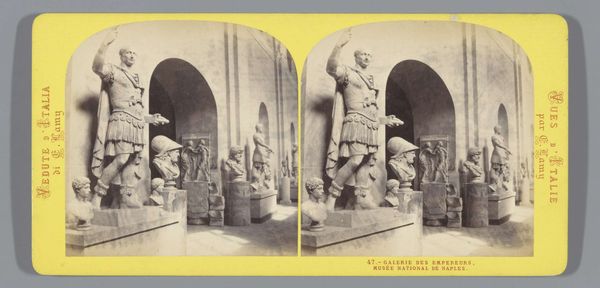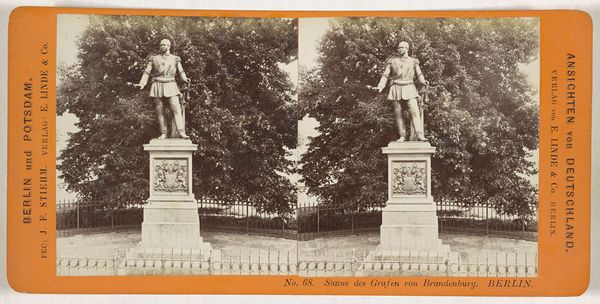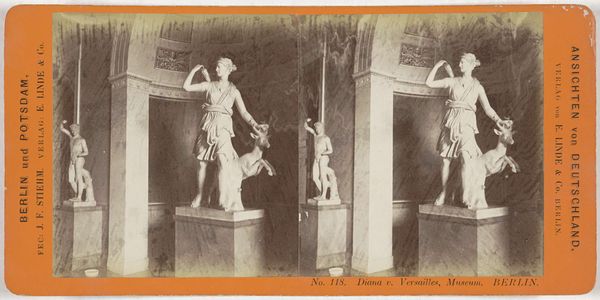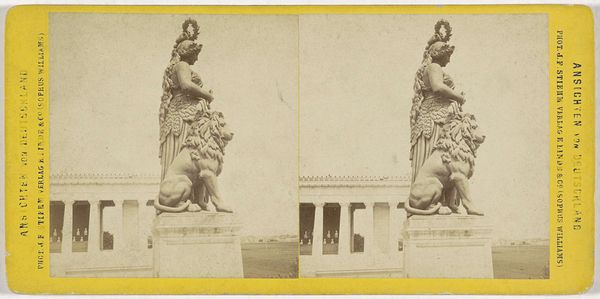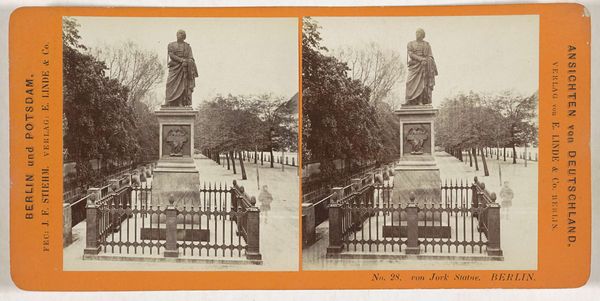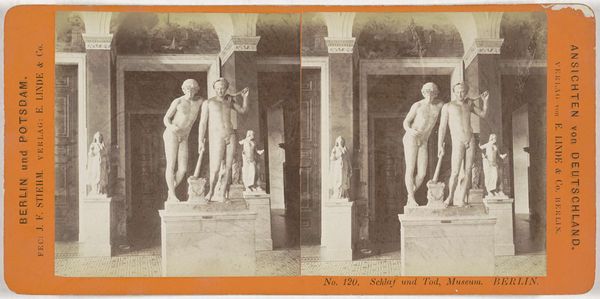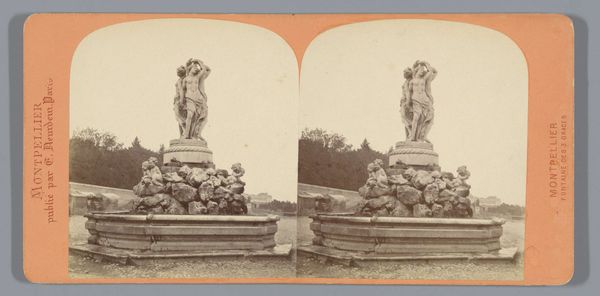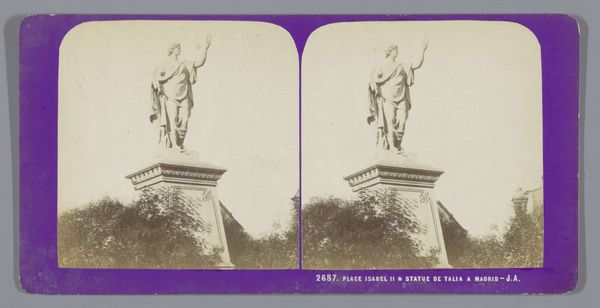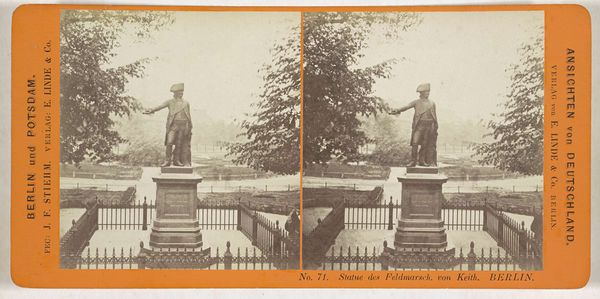
photography, sculpture
#
portrait
#
classical-realism
#
photography
#
coloured pencil
#
ancient-mediterranean
#
sculpture
Dimensions: height 87 mm, width 176 mm
Copyright: Rijks Museum: Open Domain
This stereoscopic photograph of the Apollo Belvedere in Berlin’s Neues Museum was produced by Johann Friedrich Stiehm, sometime in the late 19th century. The image invites us to consider the cultural significance of classical sculpture in 19th-century Germany. The statue, a Roman copy of a Greek original, represents ideal beauty. By the 1800s, it had become a standard of Western aesthetics. Displayed in the Neues Museum, it was meant to educate and uplift the public, shaping their understanding of art and culture. Germany was a rising power and this institution reflected a desire to claim a central place within European civilization. Historians of photography can research the institutional history of the Neues Museum. They can consider the market for stereoscopic photographs and can place the image within the visual culture of its time. The meanings of artworks are always contingent on their social and institutional contexts.
Comments
No comments
Be the first to comment and join the conversation on the ultimate creative platform.
